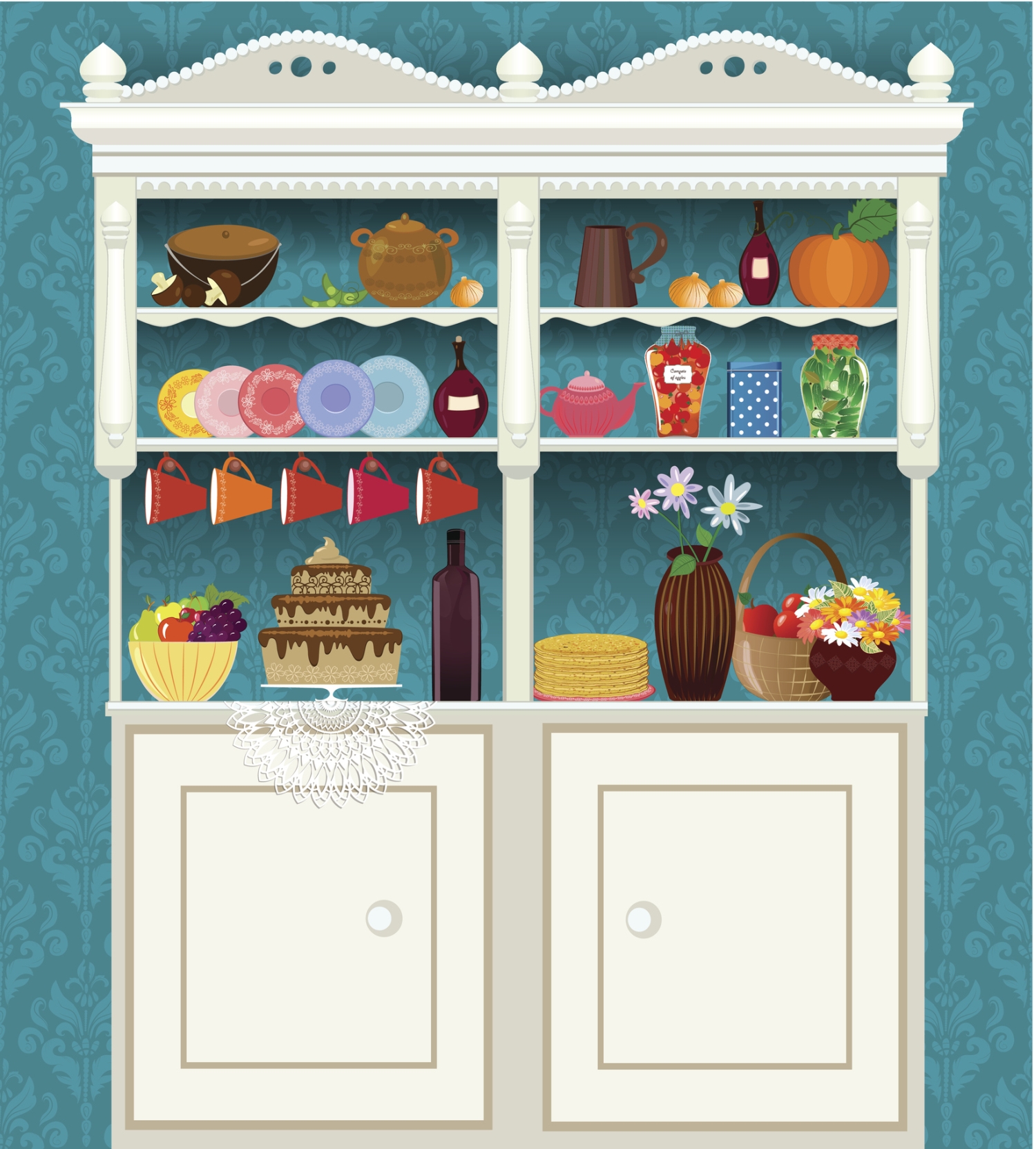
A Hoosier cabinet is a type of cabinet popular in the early 1920s, particularly in the United States. Hoosier cabinets featured both work and storage space together. Today, this cabinet type still combines the aesthetics of cabinetry, countertops, and storage. This freestanding unit is an American classic that is worth preserving.
History of the Hoosier Cabinet
The Hoosier cabinet was created at the turn of the 20th century, when kitchens were being planned for greater convenience and efficiency. They were manufactured by several companies, the most well-known of which was the Hoosier Manufacturing Company of New Castle, Indiana. This was how the Hoosier cabinet developed its name.

Hoosier cabinets contained a combination of workspace and storage space in one unit. Most cabinets featured an assortment of flour bins, sugar bins, spice racks, and pull-out cutting boards. Additionally, they featured many kitchen work tools, like rolling pins and built-in sifters, that were designed to streamline kitchen tasks. Some models even featured built-in ironing boards. As cooking and kitchen tasks shifted in the mid-20th century, the popularity of the Hoosier cabinet began to decline.
Hoosier Cabinet vs. Hutch
Although hutches are the closest modern equivalent of Hoosier cabinets, they serve slightly different purposes due to a few important distinctions.
The purpose of Hoosier cabinets was to serve as integrated workstations. They had a wide range of accessories that made cooking and cleaning easier. They first appeared in the 1920s and remained popular until the 1930s, when their popularity began to wane. Hoosier cabinets have a consistent design style due to their narrow design window.
Hutches are small pieces of furniture that have low cabinets or drawers on the bottom and open shelves or glass fronted doors on top. The primary function of a hutch is to display and store kitchen ware such as glasses, dishes, and other decorative items. Hutches, while versatile and capable of displaying a wide range of products, are not intended to be all-inclusive workstations. You can use hutches throughout the home in dining rooms, living rooms, and kitchens. Hutches come in a variety of styles, ranging from traditional to modern, because they are not limited to a single design period.
Elements of a Vintage Hoosier Cabinet
Vintage Hoosier cabinets are antiques. When you find one, there are elements that authentic Hoosier cabinets have that make them unique. Here are a few ways you can tell if a Hoosier cabinet is authentic or a reproduction piece.
- Setup – Original Hoosier cabinets have three areas. A deep lower cabinet, workspace, and shallow upper cabinets. Some antique Hoosiers have wooden countertops. Authentic Hoosier cabinets also have porcelain or enamel counters.
- Drawers – Traditional Hoosier cabinets featured drawers lined with tin. They were made to store bread. If the drawers are lined with tin, the cabinet is likely an authentic Hoosier.
- Flour Bin – Most Hoosier cabinets had a flour bin and sifter in the left upper cabinet. Many authentic Hoosier cabinets no longer have the flour sifter because they are delicate. One with the original flour bin and sifter is valuable.
- Measurements And Charts – The original Hoosier cabinets had charts on their doors. They would include measurements, conversions, and a place to write down what you need. Some even had recipes.
- Stamp – Older cabinets and furniture had date stamps. There should be a stamp with the manufacturer’s name and date. If it’s pre-1940, it is authentic.
- Ask An Appraiser – You can ask an official appraiser if your Hoosier cabinet is real. You can contact someone online and send pictures to them.
Other Hoosier Cabinet Alternatives
Aside from hutches, there are alternatives to Hoosier cabinets that work well and have some of the same character.
Pie Safe

The original purpose of pie safes was to store and display pies. Pie safes look like wood cabinets and have large glass panels.
Pie safes date back to German immigrants in the US, so the first pie safes were made by the Amish. The Pennsylvania Dutch community makes pie safes to this day, and they are the few remaining authentic pie safes in the country. There are many pie safe cabinet reproductions that can bring a vintage touch to your kitchen.
China Cabinet

A china cabinet has a bottom with solid doors and drawers and a top with glass doors. The glass top displays china and other decorative items. Homes with antiques use these cabinets to keep their valuable items safe.
China cabinets got their name because they were originally used to display china dishes. People wanted a special storage place where they could display their china collection because porcelain is fragile.
Welsh Dresser

A Welsh dresser is similar to a china cabinet, but with the optional addition of glass. The top has open shelving, making it distinct from the traditional Hoosier cabinet. A china hutch is a Welsh dresser.
A Welsh dresser is originally from Wales. The cabinets became popular throughout Europe. They are kitchen cabinets, but they can also be used as wardrobes and general storage units.
Kitchen Buffet Combo

A kitchen buffet is the bottom part of a Hoosier cabinet. To turn one into a Hoosier cabinet, you just need to add a top cabinet. You can even have one converted and customized, which is much cheaper than buying an antique Hoosier cabinet.
If you have someone build onto the buffet, you can save on material costs. All you need are small upper cabinets and something to secure them to the bottom cabinets. For a cheaper version, use open shelving.






